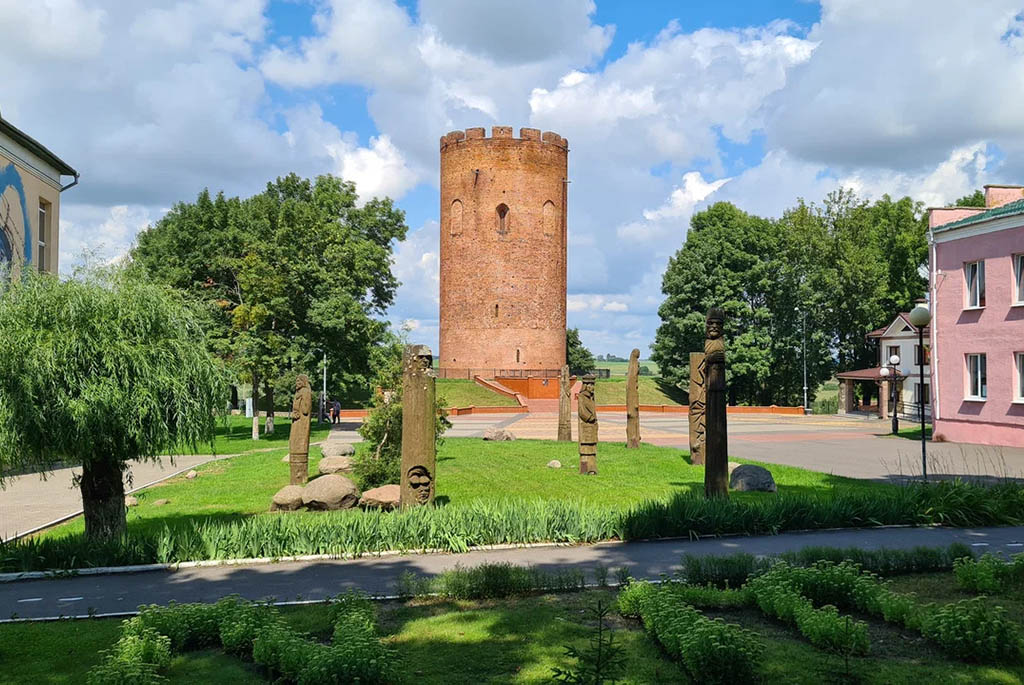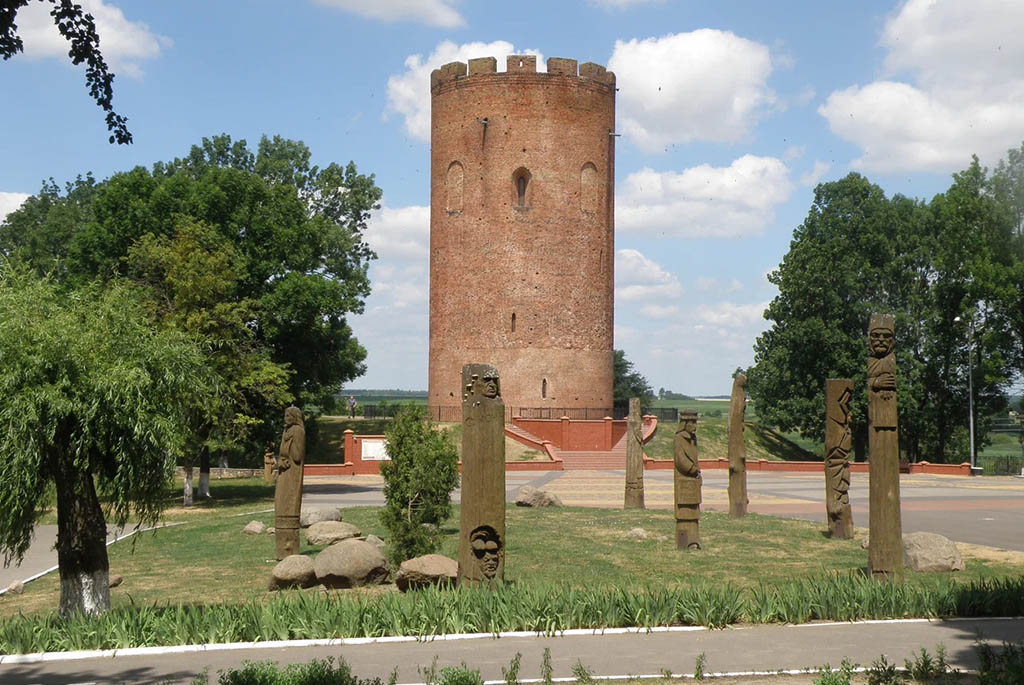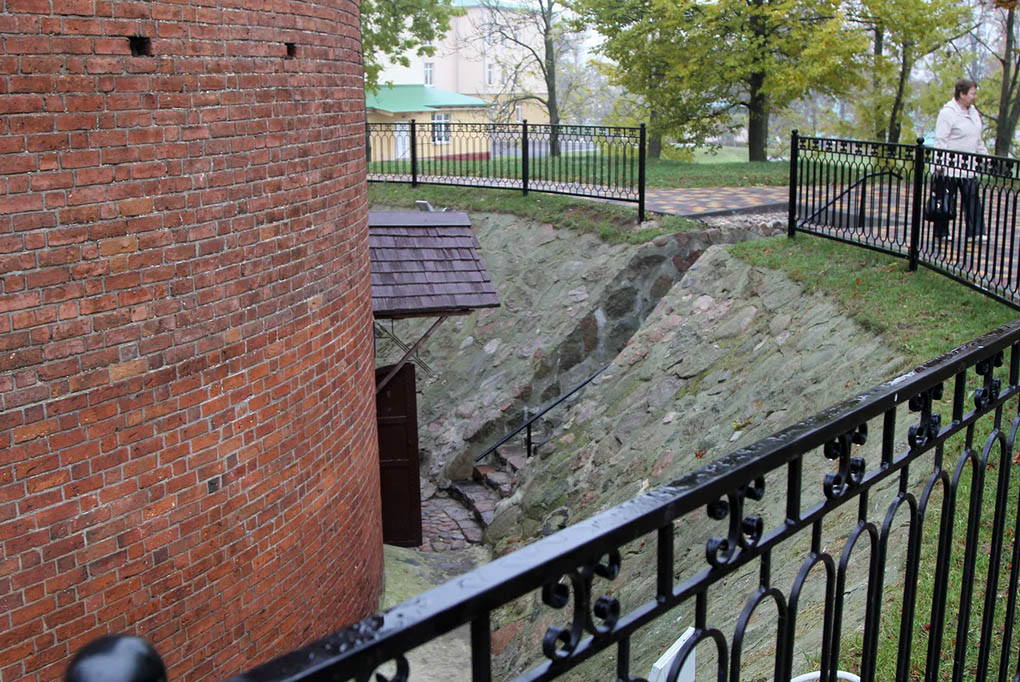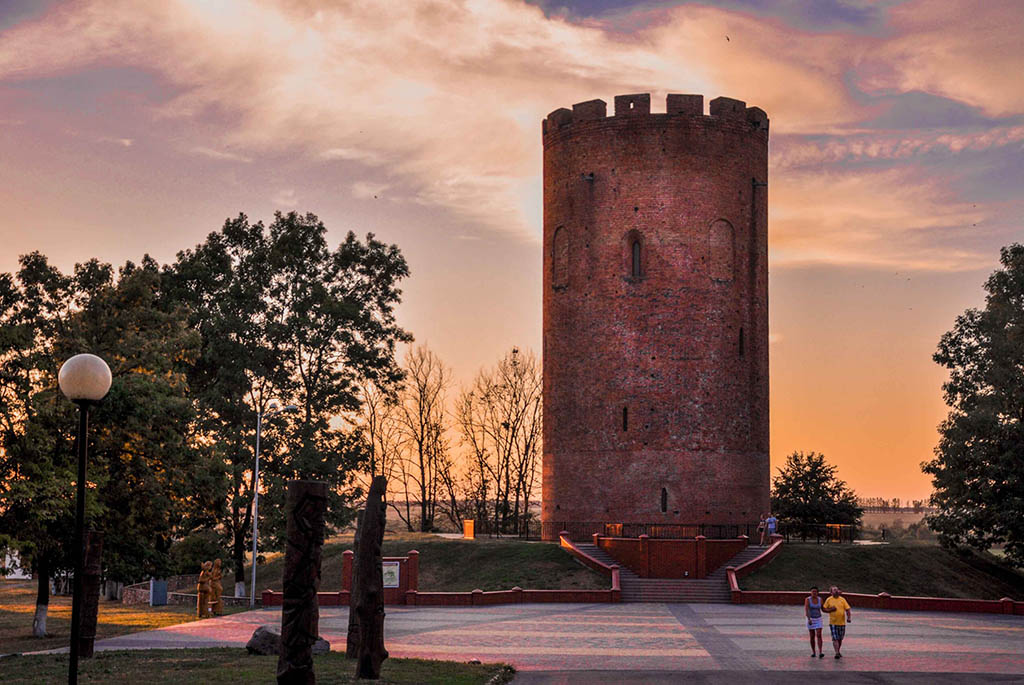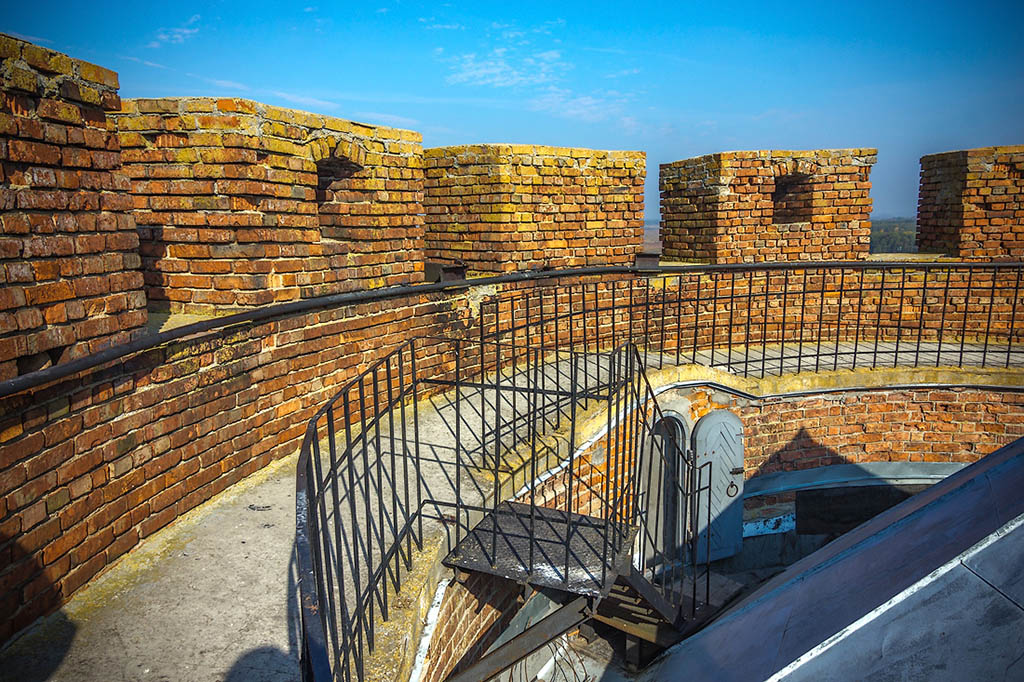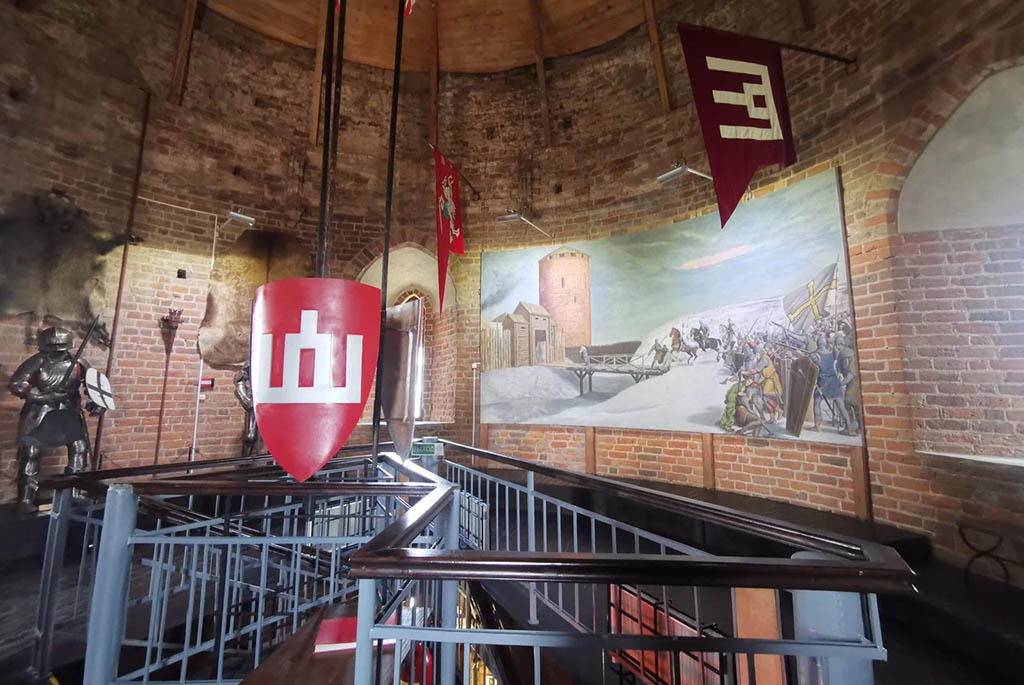The city of Kamyenyets was founded in the 13th century by Volynian Prince Volodymyr Vasylkovych. At that time, on the banks of the Lesna River, Tower of Kamyenyets was erected to protect the city's residents from enemy raids. It represented a typical tower of the Volynian type, which was a common defensive structure in many cities of Belarus, but only Tower of Kamyenyets has been preserved. Rising almost 30 meters in height, the construction shared architectural features with donjons, commonly found in European castles as part of the feudal fortification.
Yellow and red bricks made from local clay were used for its construction. The building material was laid in a characteristic manner of that time called "Wendish bond," where two full bricks alternate with one quarter brick. The walls' thickness reaches two meters. The tower itself is circular in shape, without any decorations or exterior adornments, except for the embrasures for shooting, typical of the Gothic style. Its appearance resembles a chess rook. The construction consists of five tiers connected by staircases. The lower tiers were used for storing provisions, while the upper ones held weapons and ammunition. Narrow embrasures, pierced at various levels, allowed for effective firing at enemy forces from all sides.
The upper part of the construction is crenelated. It consists of 14 rectangular crenels with embrasures alternating every other crenel. Over time, some of the crenels deteriorated and were restored during the repairs carried out in the 1950s.
For centuries, the tower in Kamyenyets dutifully performed its defensive functions. From the 14th to the late 17th century, it endured numerous raids by Crusaders and Tatars, witnessed numerous battles and fierce fights at its walls. In the early 18th century, with the development of military technology, the tower gradually lost its defensive significance and fell into disrepair. The military inventory stored inside was looted by marauders, and attempts were made to dismantle the tower for construction purposes. However, this endeavor was unsuccessful as the medieval masonry proved to be so sturdy that the ancient walls turned into a single monolithic stone over the centuries.
In the early 20th century, restoration of the tower was attempted, thanks to the initiative of a local priest named L. Paievsky. A new earthen rampart was built around it, damaged sections of the walls were repaired, and the entrance, which was once underground, was made a front door.
After the two World Wars, in the 1950s, restoration work was carried out again, and the exterior of the tower was covered with whitewash, which led to its being called the Belaya Vezha (The White Tower). The proximity of Belovezhskaya Pushcha influenced the name of the tower even more, turning it into a kind of Belarusian brand. Later, in the 1990s, the whitewash was removed, restoring the defensive structure to its original appearance.
Museum "Tower of Kamyenyets"
Despite its venerable age, the tower in Kamyenyets is well-preserved and continues to impress with its grandeur to this day. The site is under the protection of the state, and since 1960, it has housed a branch of the Brest Regional Local Lore Museum. Each tier of the structure is dedicated to a separate exhibition:
- The first tier presents a reconstruction of the basement premises from the 13th century. In ancient times, these spaces were used as food storage, cellars, and a well.
- The second tier showcases archaeological artifacts found in Kamyenyets and the Kamyenyets district, including metal items, decorations, and fragments of pottery.
- The third tier is dedicated to the history of the city as part of the Grand Duchy of Lithuania.
- The fourth tier narrates the history of Tower of Kamyenyets and the development of defensive architecture in Belarus from the 13th to the 17th century.
- The fifth tier exhibits military armor and weaponry from the 13th to the early 15th century, including swords, spears, chainmail, crossbows, and helmets.
The museum offers visitors:
- Themed and interactive tours.
- Panoramic tours dedicated to the city's architecture, conducted from the observation platform.
- Quests and museum games for children.
- A 3D demonstration of the panorama of ancient Kamyenyets and a recreation of the siege by the Crusaders.
To get to Kamyenyets from Minsk or Brest, you can take a regular bus. The tower-museum is within walking distance from the Kamyenyets bus station.
